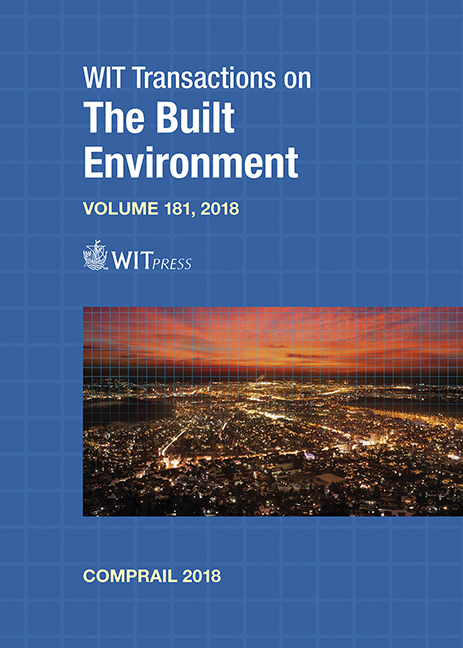VALIDATION OF NUMERICAL SIMULATION USING 3D-DISCRETE ELEMENT BALLASTED TRACK MODEL
Price
Free (open access)
Transaction
Volume
181
Pages
9
Page Range
169 - 177
Published
2018
Size
1,606 kb
Paper DOI
10.2495/CR180151
Copyright
WIT Press
Author(s)
AKIKO KONO
Abstract
The Discrete Element Method (DEM) is extensively used not only in geomechanics but also in railway engineering to model ballasted tracks. DEM can simulate peculiar deformation characteristics of ballasted layer, for examples, differential settlements around rail joints and migrations of ballast grains around canted track. DEM enable us to observe the micromechanical process of formation of such settlements or migrations. However, the quantitative accuracy of DEM has not been examined in railway engineering field. Then the author carried out a series of simple box tests by applying cyclic sinusoidal loadings on ballasted layers with same thickness and grading of real ballasted track. The series of tests have two cases of stiffness of box base, with and without rubber mat. The author took images of the ballast layers by using a high-speed camera to observe the behaviour of ballast grains with micromechanical views. Then the figures were analysed by using Particle Imaging Velocimetry to visualize the movement of ballast grains. At the same time, the author simulates the simple box test by DEM to validate the discrete element model of ballasted layer. The DEM results show that the difference of amplitude of loading plate’s displacement is influenced by contact stiffness of ballast grains predominantly, and that the difference of ballast settlement is influenced by friction coefficient between ballast grains predominantly.
Keywords
ballasted layer, cyclic loading test, discrete element model, validation





